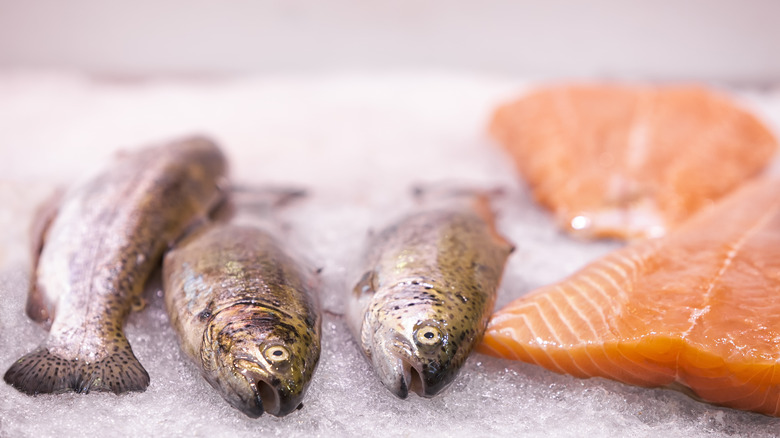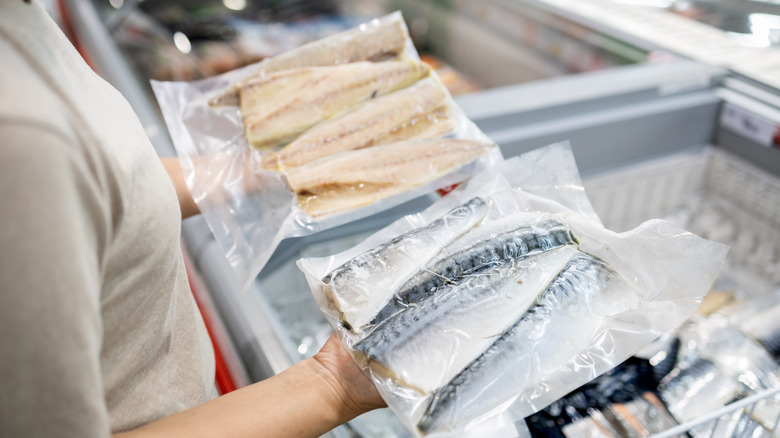How To Check If Your Fresh Fish Was Previously Frozen
There's nothing like a soft and buttery fillet of salmon. Served with some warm rice and a freshly squeezed lemon, you've got a seafood plate of dreams. Still, if the seafood you buy isn't up to standard, it can ruin the plate entirely. Luckily, there are some ways to ensure you're buying the freshest seafood possible. For starters, here's how to check if your fresh fish was previously frozen.
Before you add "fresh" seafood to the cart, start by checking the label. Every piece of seafood comes with a label providing information about its origin, species, certifications, and more. The tidbits to look out for on these tags are the fish's best-by and pack date. These will tell you exactly when retailers packed the fillet and how long it will be at its best. In addition to this label, retailers also must state whether a fish is completely fresh or has been previously frozen and thawed. (Also known as a "refreshed" fish.) Look for this information as well.
These details can confirm if a fish is fresh, but checking a fillet's appearance and texture is another good way to tell a fillet's age. Fresh fish will be vibrant and firm, while older varieties will be limp and dull. Finally, if a fish's label is damaged, or you become overwhelmed by all that information, make things easy on yourself and ask the fishmonger for help. The experts know best.
What makes frozen fish different from fresh?
Once you've got a good grasp on the topic of seafood, or are willing to do a quick internet search, you can also tell whether a fish is fresh by checking if it's in season. Some seafood, like cod and clams, are obtainable year-round, but other picks, like salmon or shrimp, are only available during parts of the year. The rest of that time, it's frozen. When in doubt, do a little research.
If your fish isn't completely fresh, that probably means it was frozen. While the term "fresh" is enticing, don't be put off by a fish that has touched a freezer. Plenty of fishmongers and chefs prefer to use frozen seafood. Quality frozen seafood is packed immediately after catching to preserve its flavor. Fresh seafood, on the other hand, could have been sitting on the shelf for days. Its taste won't be as reliable or consistent as frozen. (Which is another reason to check a fish's best-by and pack-dates.) Frozen seafood also has convenience on its side. While you might have to eat fresh fish within a few days of purchase, frozen seafood can stay in the freezer until you're ready to thaw it and eat.
Still, if you live near a body of water swimming with fish, fresh could be the better choice. It all comes down to preference. At the end of the day, all that matters is that you know exactly what you're buying.

